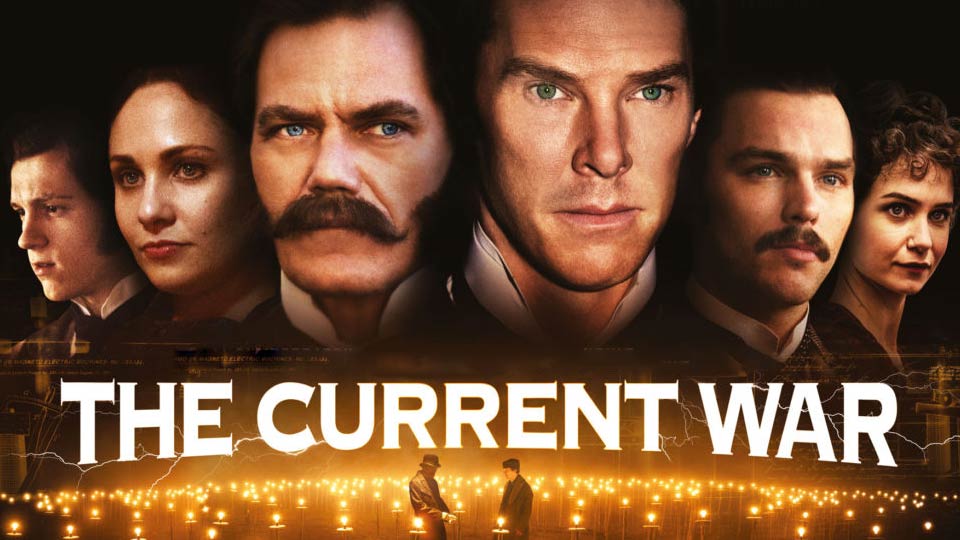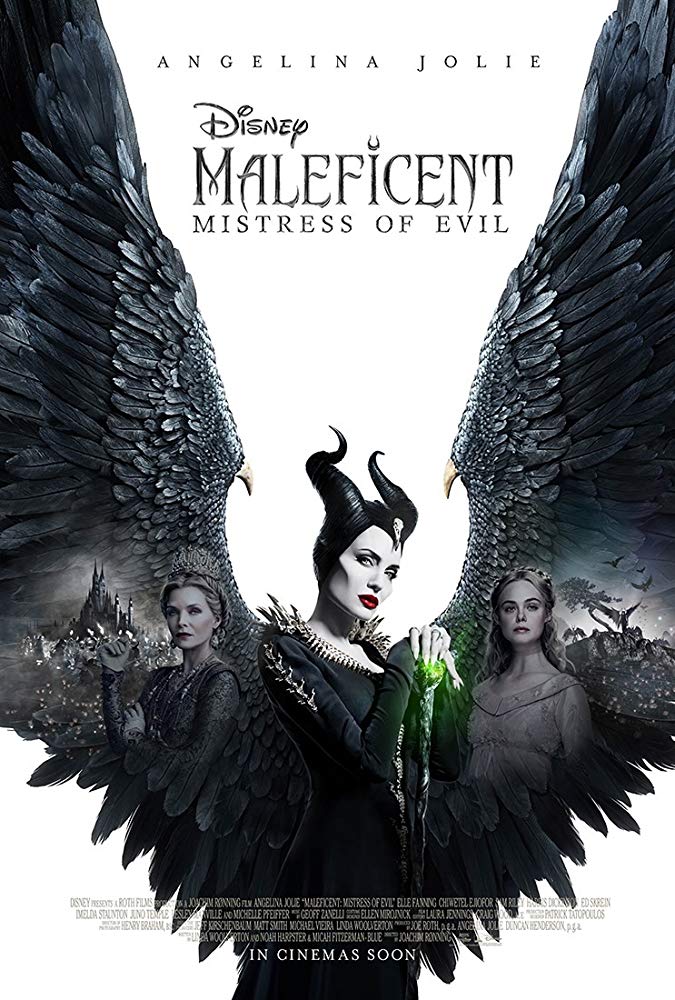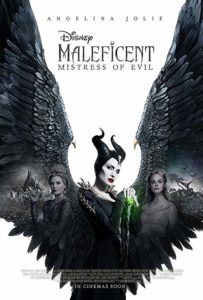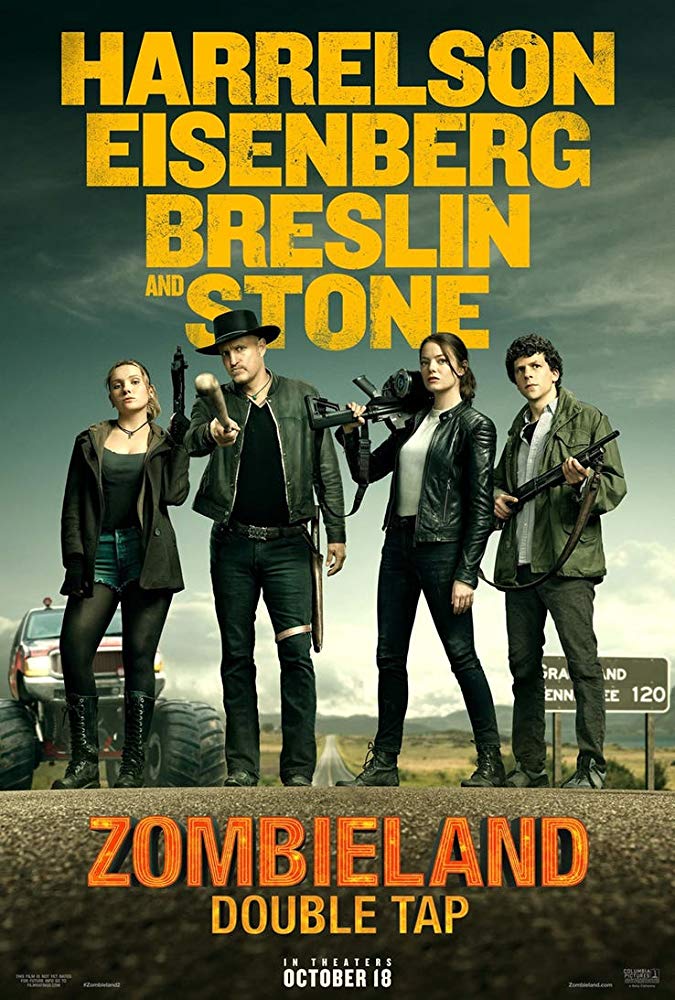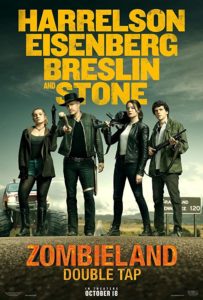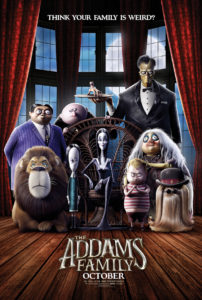The Current War: Director’s Cut
Posted on October 24, 2019 at 5:35 pm
B +| Lowest Recommended Age: | High School |
| MPAA Rating: | Rated PG-13 for some violent content and thematic elements |
| Profanity: | Brief strong language |
| Alcohol/ Drugs: | Alcohol, smoking |
| Violence/ Scariness: | Flashback to Civil War scene with guns, animals and humans electrocuted, discussion of "humane" executions, sad death of wife and mother, tense confrontations |
| Diversity Issues: | Anti-immigrant prejudice |
| Date Released to Theaters: | October 25, 2019 |
| Date Released to DVD: | March 30, 2020 |

There’a a saying usually attributed to Balzac: “Behind every fortune is a crime.” There is a fairy tale quality to stories of people who have exciting new ideas that change our lives and are rewarded with unimaginable fortunes, from the grad students who created Google to the garage tinkerers who founded Hewlett-Packard and the college dropouts who created Microsoft and Facebook.
But as any business school student knows, it takes more than a brilliant or even a monumentally disruptive idea to create a business. That requires the ability to execute. It is one set of skills to jot down great thoughts in a notebook but another set entirely to bring it all to life. It takes courage, because ordinary people are afraid of anything new and people who are invested in the old ways will try to stop you. And it takes a singular purpose that looks a lot like ruthlessness. That is the story “The Current War,” which is not as much about the inventions that transformed America from being lit by gas lamps and candles to being lit and powered by electricity as it is about the control of those inventions and the fortunes they made.
The three major players are America’s greatest inventor, Thomas Alva Edison (Benedict Cumberbatch), entrepreneur and engineer George Westinghouse (Michael Shannon), and visionary Serbian immigrant Nikola Tesla (Nicholas Hoult). Also in the mix is one of the wealthiest men in the world, J.P. Morgan (Matthew McFayden) and the current Spider-Man, Tom Holland, as Edison’s aide Samuel Insull.
At the center of their battle is the fight over what kind of electricity will be used, Edison’s lower voltage direct current, which was safer but more limited in range, and the Tesla/Westinghouse alternating current, which travelled over longer distances, was powerful enough to fuel machinery as well as light bulbs, but was also more dangerous, potentially fatal. (Now you know what AC/DC means and how the Australian rock group got its name and why their first album was named High Voltage.)
Director Alfonso Gomez-Rejon avoids the too-often stuffy quality of prestige historical dramas with refreshingly dynamic camerawork from DP Chung-hoon Chung (“The Handmaiden,” “Stoker”) and editing by Justin Krohn and David Trachtenberg. The opening shots are as striking as any you’d find in an art-house or superhero movie, blowing the dust off of the idea that movies set in the past have to be stodgy to be taken seriously. The script by Michael Mitnick packs a lot of developments and details into the story, from the illness of Edison’s wife to the conflicts (and jealousy) between the talent and the money to the shifting loyalties and various strategic maneuvers (legal and illegal), some as complex as the engineering specs for the various contraptions. One fascinating detour reminds us that as soon as new technology is invented, someone will try to figure out a way to use it to kill people (it was still so new there was no word for electrocution). Another reminds us of the connection between the characters on screen and the very technology we use to tell their story.
“The Current War: Director’s Cut” places the human drama in the midst of cultural and technological shifts and shows us how they affect and are affected by each other. Vivid, compelling characters, smart, witty dialogue, and a cherry-on-the-top ending making this film not just enjoyable, but, yes, illuminating.
NOTE: The official title of this film includes the words “Director’s Cut” because after it premiered at the Toronto Film Festival its release was put on hold because Harvey Weinstein (the distributor) was caught up in the #metoo accusations. The version shown at the festival was re-cut by Weinstein and director Alfonso Gomez-Rejon was not happy with that version. Martin Scorsese came on as a producer to make sure he was able to release the version he wanted.
Parents should know that this film include the sad illness and death of wife and mother, offscreen murder and execution, electrocutions of people and animals, Civil War scenes with shooting, and some strong language.
Family discussion: What is a bigger factor in success — having the best idea or being able to put it into practice — or wanting to win above all? What is Edison’s most important invention? Why did Elon Musk name his company Tesla?
If you like this, try: two biopics about Edison, “Young Tom Edison” with Mickey Rooney and “Edison the Man” with Spencer Tracy

